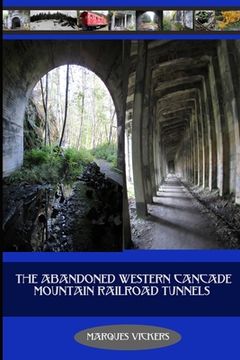The Abandoned Western Cascade Mountain Railroad Tunnels: 1910 Wellington Avalance (en Inglés)
Reseña del libro "The Abandoned Western Cascade Mountain Railroad Tunnels: 1910 Wellington Avalance (en Inglés)"
Visually enter the forgotten tunnels and snow sheds of the early twentieth century embedded into the Cascade Mountains of Western Washington. Marques Vickers escorts you through photographically these abandoned crevices currently off limits to exploration. Included in his imagery is the ghost town and ruins of Wellington near Stevens Pass destroyed by a 1910 avalanche.The creation of the train routes through the Cascade Mountains proved a monumental challenge. The conflict arose between the engineering capabilities of man and the treacherous topography and inclement weather of the region. The nine miles of track connecting the towns of Stevens Pass, Wellington and Scenic, Washington ultimately proved a failure for the Great Northern Railway. The Iron Goat Trail that retraces the former routing is a popular hiking destination. The trailhead is easily accessible by car. The well-maintained path leads you through traces of two ghost towns that were obliterated by avalanche.In the last decade of the 19th century, railroads were the primary mode of transportation for transcontinental passenger travel and freight. Previously isolated and inaccessible portions of the country became connected. Geographical impediments were merely obstacles to overcome. As profits swelled, ambitious and bold routings were designed and realized. During the 1890s, construction innovations enabled greater travel and more direct routes. These projects, employing tunneling and snow sheds, began lining the mountainous stretches immediately past Stevens Pass on the route to the Everett and Seattle stations.Immigrant laborers cleared the hillsides of mammoth trees. They drilled and blasted rock to create a flat grade. Camps were required for the hundreds of workers to maintain the tracks and keep them operational during the winter snows. Snowdrifts on the mountains often piled as high as 25 feet on either side of the tracks, creating artificial canyons and muffling warning noises. Snow slides often trapped and delayed trains for long periods of time until snowplows and large crews could manually shovel the paths.Crossing the Western Cascades in winter was a daunting trek. Along the Stevens Pass corridor between Wellington and Scenic, eight snowsheds and tunnels protected trains from the perilous conditions. Under these shelters, trains and passengers were considered safe. Exposed areas made trains susceptible to danger.Construction on the snowsheds began in 1893. Each were framed with untreated Douglas fir, hemlock and Pacific Silver Fir beams and reinforced with concrete. The interior of the structures however, created residual problems, often trapping smoke and hindering visibility. The summer heat caused the timbers to become dry and less resistant to sparks from passing trains.Maintenance costs skyrocketed during the winter months. The massive snows and periodic avalanches sometimes caused lengthy closures and worse fatalities. Derailments, destroyed bridges and the human risk factor made the decision to abandon the menacing stretch an economic necessity by 1921. Construction began in December 1925 of an alternate lower elevation extended tunnel route that remains today. Upon its completion, the doomed stretch between Stevens Pass, Wellington and Scenic was abandoned to the elements.The snowsheds and tunnels remain as relics. They have continued a slow but steady deterioration, crumbling and becoming defaced with graffiti. Their existence is a threat to the curious who enter due to unpredictable falling debris and flash flooding.Danger aside, imagination is stirred when entering these relics. On envisions a bygone era where the speed of transport was relative. A voyage by cross-country train does not match the speed required by contemporary travelers. In their silence and emptiness, the vacant tunnels and snow sheds resemble tombs depicting casualties of time.

